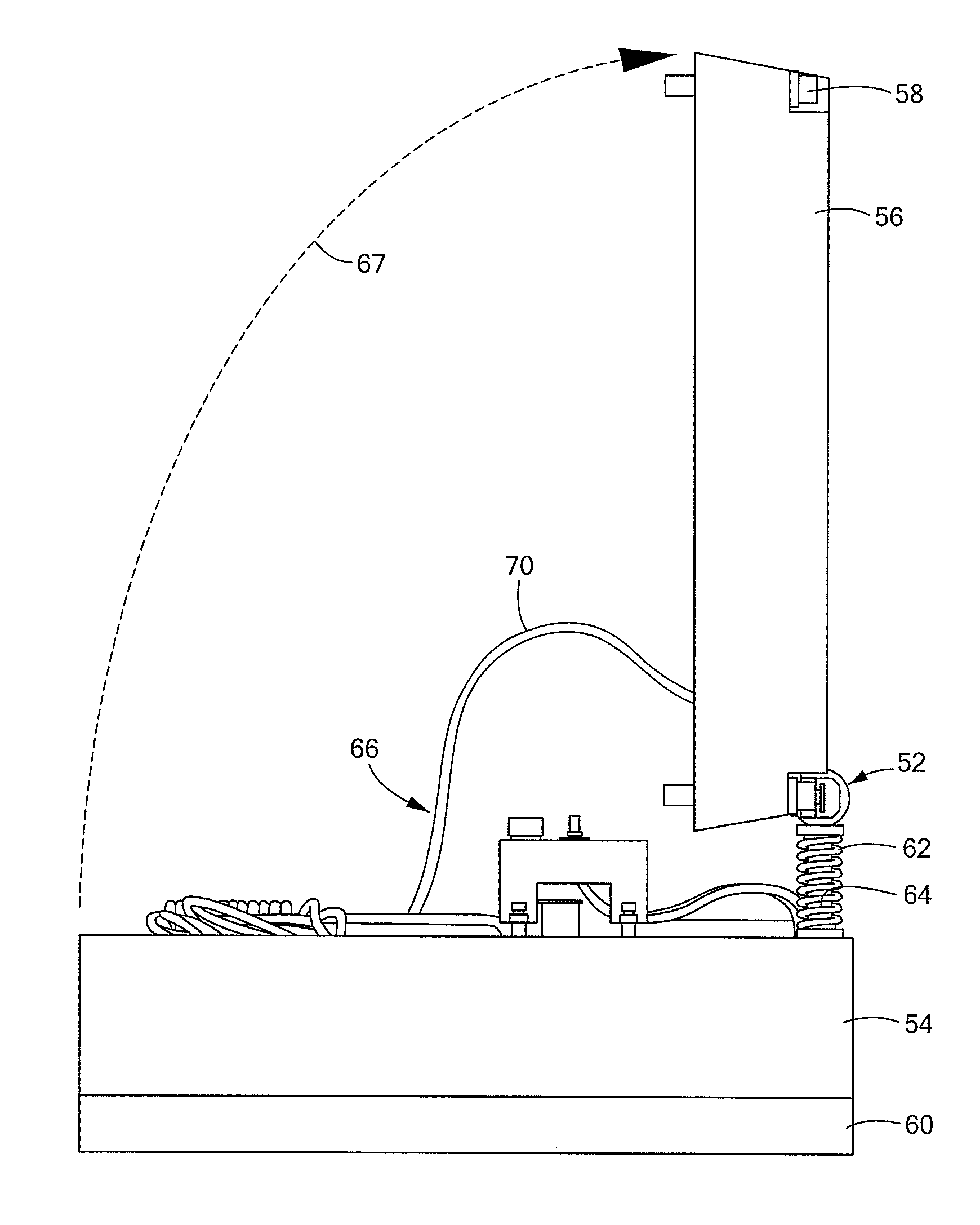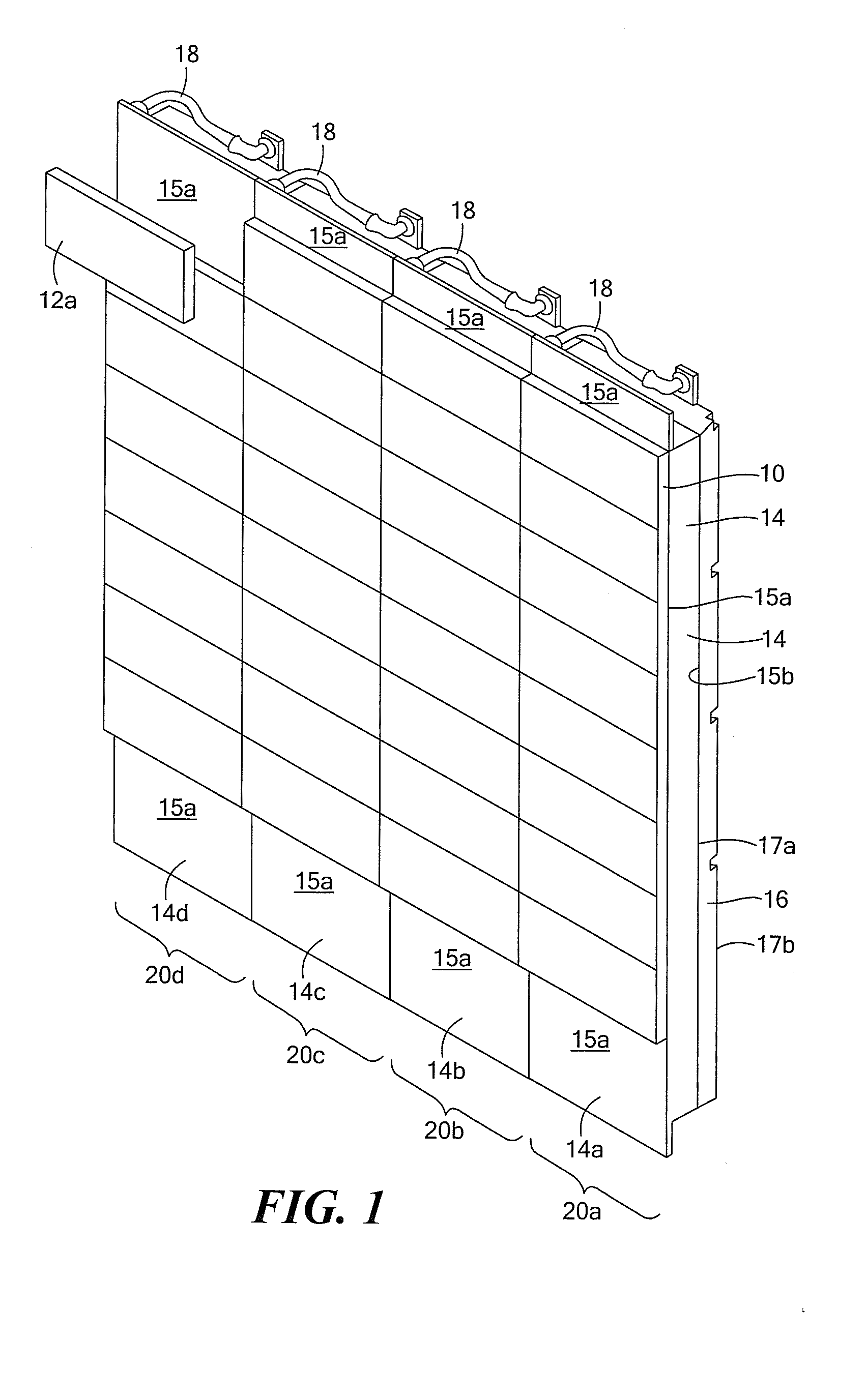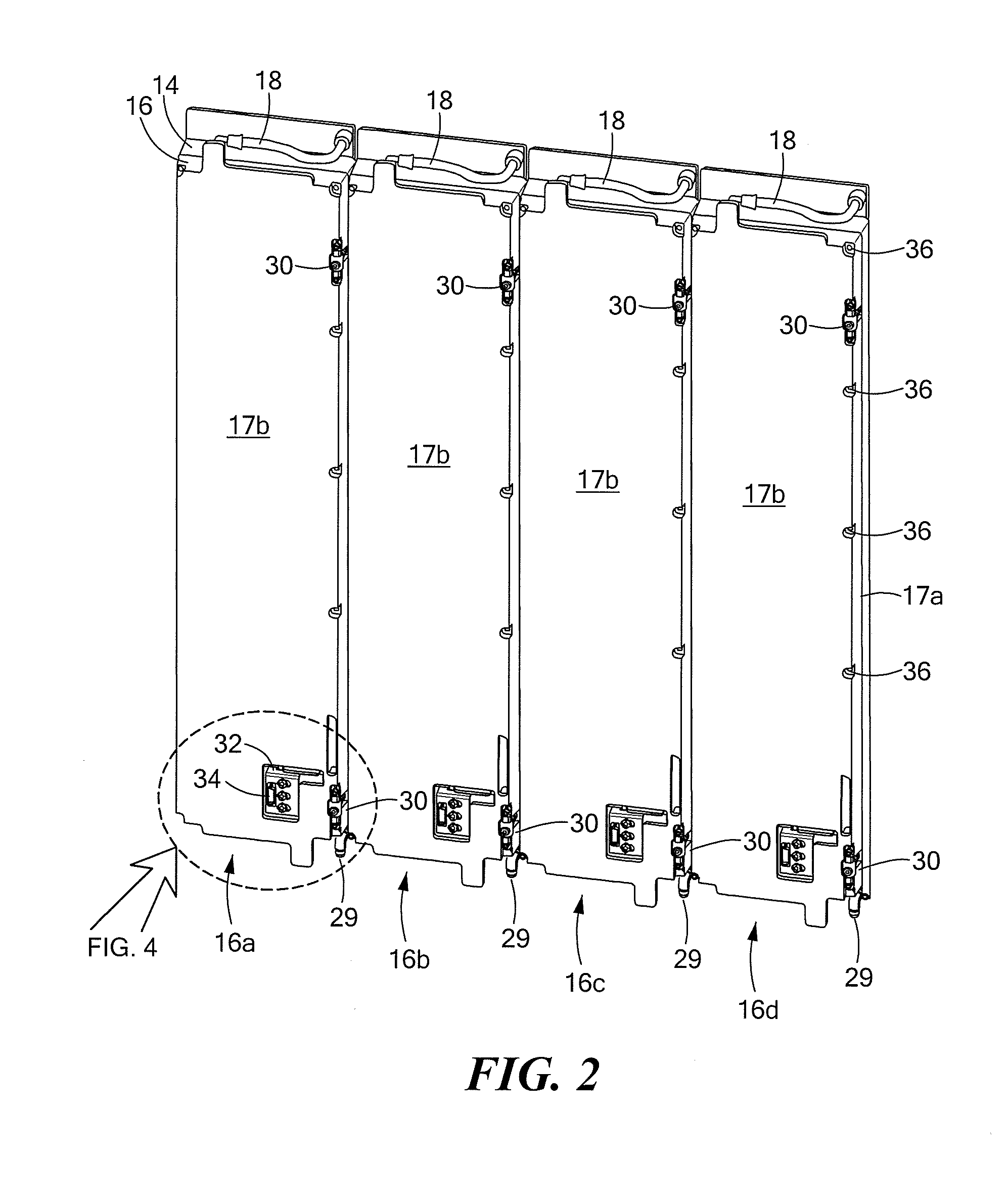Translating Hinge
a technology of hinges and hinge plates, applied in the field of hinges, can solve the problems of limiting the locations/applications in which the hinge can be used, the hinge is relatively difficult to spring load, and the assembly is relatively bulky, so as to reduce the chance of damage to either assembly, improve the serviceability of both assemblies, and improve the reliability of the system
- Summary
- Abstract
- Description
- Claims
- Application Information
AI Technical Summary
Benefits of technology
Problems solved by technology
Method used
Image
Examples
Embodiment Construction
[0032]Described herein is a translating hinge which can be used to couple two objects. Before describing a translating hinge, it should be appreciated that reference is sometimes made herein to a translating hinge being used in a radio frequency (RF) transmit / receive system and in particular in a radar system having a so-called panel architecture. It should also be appreciated, however, that references to such radar systems are made only for the purpose of promoting clarity in the description and drawings with respect to the concepts being described and claimed and such references are not intended to be, and should not be, construed as limiting.
[0033]It is fully appreciated that the translating hinge concepts described herein find use in a wide variety of applications including both commercial and military applications. The translating hinge concepts described herein may find particular use in any application in which it is desired to include a hinge which provides both a translatio...
PUM
 Login to View More
Login to View More Abstract
Description
Claims
Application Information
 Login to View More
Login to View More - R&D
- Intellectual Property
- Life Sciences
- Materials
- Tech Scout
- Unparalleled Data Quality
- Higher Quality Content
- 60% Fewer Hallucinations
Browse by: Latest US Patents, China's latest patents, Technical Efficacy Thesaurus, Application Domain, Technology Topic, Popular Technical Reports.
© 2025 PatSnap. All rights reserved.Legal|Privacy policy|Modern Slavery Act Transparency Statement|Sitemap|About US| Contact US: help@patsnap.com



